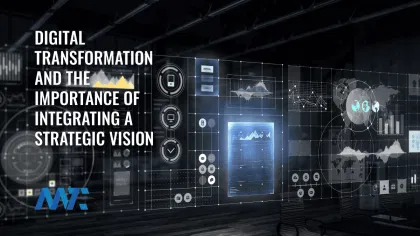
One of the few silver linings of the COVID-19 crisis for companies has been the necessary acceleration of digital transformation, experienced in 2020 by 65% of companies according to Gartner. It’s been on fast-forward since businesses across the world have pivoted their approach.
As the pandemic has kept many people avoiding face-to-face interactions in stores and offices, organizations of all types have been responding to customers with more convenient digital services. For example, wholesalers and B2B companies that never had a way to sell products directly have been working overtime to roll out new e-commerce capabilities, while simultaneously supporting a primarily work-from-home workforce. As a result, investments in new technology have surged to keep pace with customer expectations.
Yet rushing to invest in technology simply because it’s the thing to do is rarely a good plan of action. Many companies buy into expensive technology, assuming it can be easily tailored later on to fit specific business models, target audiences, and customer experience objectives, only to be disappointed down the road.
There has to be a plan. But in this uncertain business environment, there also has to be urgency. How can an organization accomplish both?
One of the most important considerations, as an enterprise goes fully digital, is the integration of a solid strategic vision across IT and marketing with an eye toward overall digital maturity. Without it the organization risks diminished results, more technology siloes, and missed business objectives. Yet there’s a misconception that being strategic means slowing down the process. That’s not the case. Even if the enterprise is well into its rollout, it’s not too late to make adjustments to meet key objectives.
Importance of Test-and-Learn
The best way to integrate a strategic vision into digital transformation is with a test-and-learn mindset. Often the vision starts from leadership and continues multiple hypotheses that can be validated through activation. Start small, test with subsets, learn incrementally, build momentum, and ultimately achieve the organization’s larger business and financial goals. There may be momentary setbacks along the way — but with a test-and-learn approach, perceived failures become learnings and the organization will always experience forward movement.
Here are a few tips to ensure successful, timely digital transformation with a strong strategic foundation:
- Set clear expectations with leadership. As with so many things, support from the top is critical. Help senior executives understand that speed without strategy is counterproductive. A test-and-learn approach will get the organization to its desired end goal in the shortest amount of time and continue to strengthen its overall vision.
- Invest in appropriate support technologies. Part of a successful digital transformation process is having good data collection and management processes, tools to enable testing and personalization, and analytics and business intelligence. The martech stack should be reviewed holistically to ensure that systems are interconnected and working together efficiently. Data hygiene issues and cumbersome manual processes are common pitfalls that get in the way of digital transformation. Systems should also be scalable and flexible to work with newly added technology as the business changes. To achieve this, R2i partners with Adobe as their solution offerings are designed to complement each other and other best-in-class technologies within the martech ecosystem, connecting data from multiple sources into centralized platforms.
- Don’t overwhelm the process. Integrate over time. Many organizations are standing up their digital technologies for the first time, which means there is a lot to learn at once. It’s wise to attack the investments in smaller pieces by phase, mastering the systems as you go. Also, many organizations are under heavy financial pressure, which means doing more with fewer people. In this environment, early investments will likely focus on automation so that available personnel are available to focus on value-added tasks. By establishing a technology roadmap, the enterprise will be most efficient in eventually achieving its broader goals.
- Commit to reporting on a monthly or quarterly basis. In order for the process to work, there has to be transparency about what is being learned and how it is affecting the overall plan. Set a goal of meeting with corporate leadership and key team members monthly or quarterly, to provide updates, learnings, and recommendations for plan adjustments. To ensure an effective implementation, it can be smart to retain a digital partner. If COVID-19 has proven anything, it’s that heavy strategies are no longer feasible because when unexpected events come up, organizations need to be able to judge quickly what has to pause and what has to change. Partners with expertise in both technology and strategy have a deep understanding of how the two connect. They can help formulate versatile plans that will still be effective and useful three months, six months, a year, even three years from now.
Over the past year the world has shifted — and not only because of the coronavirus. Expectations for digital experience have evolved, and customers expect the same level of convenience and support, whether they’re buying socks or cement trucks. Regardless of business category, companies need more than a website; they need to know how to collect market data, how to connect that data, and how to use those connections to deliver personalized customer experiences.
In this pursuit, speed and strategy are not mutually exclusive goals. The companies that get it right are those that not only adopt a test-and-learn mindset but also trust their internal and external business partners. Teams must respect their leadership, and executives need to provide appropriate support. The past year has been challenging say the least — but if organizations pull together, they will emerge from their digital transformation journey stronger, smarter, and more connected to their customers than ever before.